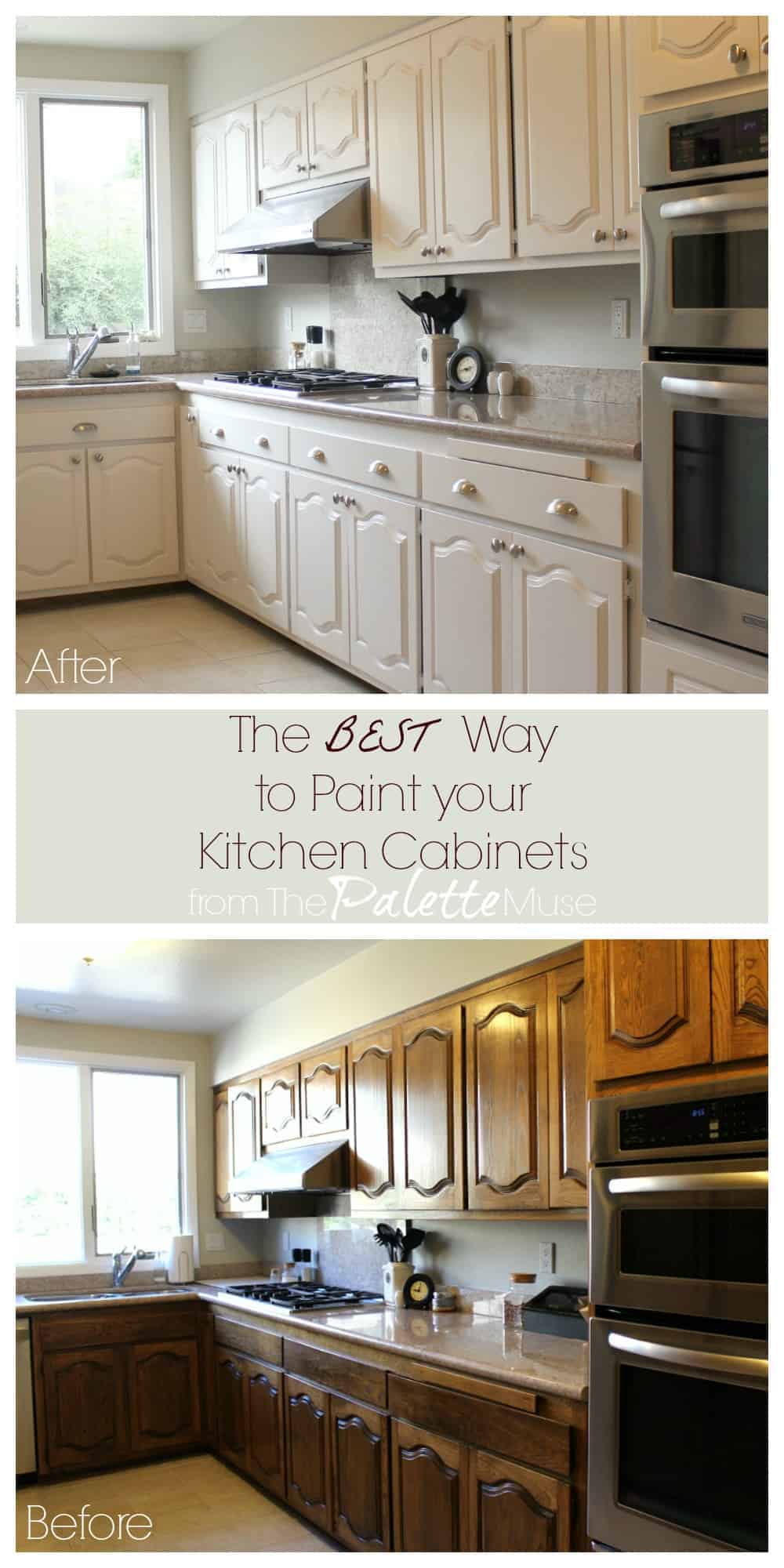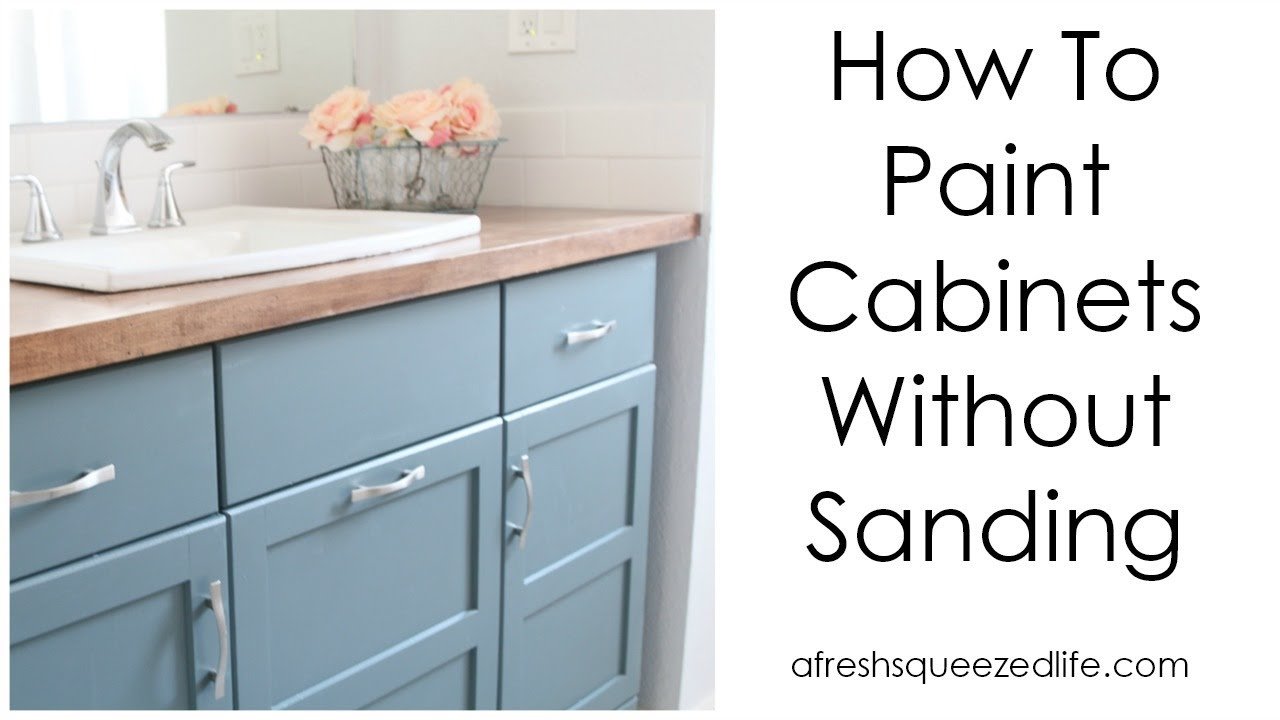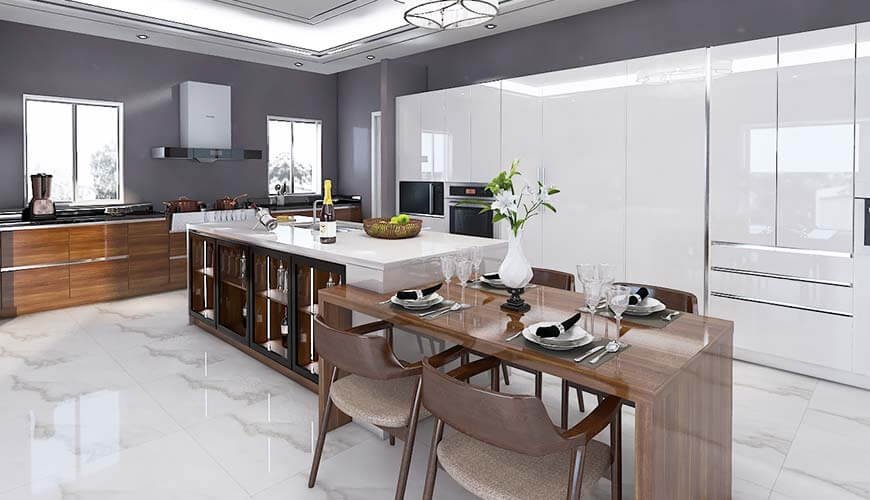Yes, kitchen cabinets can be painted without sanding. Use a deglosser or a bonding primer for proper adhesion.
Painting kitchen cabinets without sanding is a popular choice for homeowners seeking a quick and cost-effective update. Proper preparation is crucial for achieving a smooth, lasting finish. Deglossers, also known as liquid sandpaper, help remove the glossy finish from cabinets, allowing the new paint to adhere better.
Bonding primers are another excellent option, providing a strong base for the paint. These methods save time and effort while ensuring the paint sticks well. Choose high-quality paint specifically designed for cabinets to achieve professional-looking results. Proper ventilation and patience during the drying process are also essential steps in this DIY project.
Table of Contents
ToggleBenefits Of Painting Without Sanding
Painting kitchen cabinets without sanding can be a game-changer. This method offers several advantages that can make your renovation project easier. Let’s dive into the key benefits.
Time-saving
Skipping the sanding step can save you a lot of time. Sanding cabinets can be labor-intensive. It requires special equipment and effort. By avoiding sanding, you can focus on painting. This speeds up the entire process.
Imagine cutting your project time in half. You can finish your cabinets in a weekend instead of weeks. This allows you to enjoy your new kitchen sooner.
Cost-effective
Painting without sanding is also cost-effective. Sandpaper, sanding blocks, and electric sanders can add to the budget. By skipping this step, you save money.
Additionally, you also save on labor costs if you hire professionals. Less time and materials mean lower costs. This makes your kitchen makeover more affordable.
| Benefit | Details |
|---|---|
| Time-Saving | Finish the project faster by skipping sanding. |
| Cost-Effective | Save on materials and labor costs. |
By understanding these benefits, you can make an informed decision. Painting kitchen cabinets without sanding can be both efficient and budget-friendly.

Choosing The Right Paint
Painting kitchen cabinets without sanding can save time and effort. The key to success lies in choosing the right paint. The paint must bond well and withstand kitchen wear and tear. Let’s explore the best types of paint and top brands for this task.
Types Of Paint
There are several types of paint suitable for kitchen cabinets. Each type has its benefits and drawbacks. Here’s a brief overview:
- Latex Paint: Easy to clean, quick-drying, and low odor.
- Chalk Paint: No prep needed, matte finish, and easy to distress.
- Oil-Based Paint: Durable, smooth finish, but longer drying time.
- Acrylic Paint: Water-based, durable, and less toxic.
Best Brands
Choosing the right brand is crucial for a successful project. Here are some trusted brands for painting kitchen cabinets without sanding:
| Brand | Type | Features |
|---|---|---|
| Benjamin Moore Advance | Waterborne Alkyd | Durable, easy cleanup, smooth finish |
| Rust-Oleum Cabinet Transformations | Latex | No sanding needed, quick-drying |
| Annie Sloan Chalk Paint | Chalk | Low prep, matte finish, wide range of colors |
| INSL-X Cabinet Coat | Acrylic | Stain-resistant, durable, easy application |
Choosing the right paint ensures your kitchen cabinets look stunning and last long. Select the type and brand that best fits your needs.
Preparing Cabinets
Before painting kitchen cabinets, proper preparation is key. This ensures a smooth, long-lasting finish. Skipping steps can lead to peeling and chipping. Let’s break down the preparation process into two essential steps: Cleaning and Deglossing.
Cleaning
First, remove all cabinet doors and hardware. This makes cleaning easier. Use a mild detergent mixed with warm water. Scrub every surface to remove grease, grime, and food particles.
- Use a soft cloth or sponge.
- Pay special attention to corners.
- Rinse thoroughly with clean water.
- Dry completely with a clean towel.
Ensuring the cabinets are clean is crucial. Any residue can prevent paint from adhering properly. For stubborn grease, use a degreaser or vinegar solution.
Deglossing
Deglossing removes the shiny layer on cabinets. This step ensures the paint sticks well. You can use a liquid deglosser. It’s easy and fast.
| Steps | Tools Needed |
|---|---|
| 1. Apply deglosser with a cloth | Deglosser, clean cloth |
| 2. Rub in circular motions | Clean cloth |
| 3. Let it dry completely | Time |
Deglossing makes the surface rougher. This helps the paint grip the surface better. Always work in a well-ventilated area. The fumes can be strong.

Using Primer
Painting kitchen cabinets without sanding is possible. The secret lies in using a good primer. Primer helps paint stick better to surfaces. It also covers stains and old colors. This section will explain the importance of primer and the best primers for cabinets.
Importance Of Primer
A primer is a base coat. It helps paint adhere to the surface. This is crucial for smooth and lasting results. Primer also blocks stains. Old grease and grime won’t show through. It creates a uniform surface. This means fewer paint coats are needed. Using primer saves time and effort.
Best Primers For Cabinets
Choosing the right primer is important. Here are some top options:
| Primer | Features |
|---|---|
| Zinsser Bulls Eye 1-2-3 | Water-based, blocks stains, sticks to all surfaces |
| Kilz Adhesion | Bonds to tough surfaces, water-based, low odor |
| INSL-X Stix | Strong adhesion, water-based, covers glossy surfaces |
These primers are easy to use. They dry quickly. They also create a strong bond between the paint and the surface. This ensures your cabinets look great for years.
Painting Techniques
Painting kitchen cabinets without sanding is possible. Using the right painting techniques is essential. This guide will explore brushing vs. spraying and applying multiple coats.
Brushing Vs. Spraying
Brushing paint onto cabinets is simple. It requires basic tools like brushes and rollers. This method is more accessible for beginners. Brushes offer more control, especially in tight spaces. However, it can leave brush marks if not done carefully.
Spraying paint provides a smoother finish. It covers large areas quickly. Spray painting requires more preparation. Cabinets must be removed and placed in a well-ventilated area. This method also demands a spray gun and protective gear. Spraying can save time but needs practice.
Applying Multiple Coats
Applying multiple coats ensures durability. It also provides even color coverage. Here’s a simple step-by-step guide:
- Prime the cabinets with a bonding primer.
- Allow the primer to dry completely.
- Apply the first coat of paint evenly.
- Let it dry for the recommended time.
- Lightly sand any rough areas.
- Apply the second coat of paint.
- Repeat drying and sanding if needed.
Using multiple coats makes the finish more durable. Ensure each coat is thin and even.
Drying And Curing
Painting kitchen cabinets without sanding can save time and effort. Yet, understanding the drying and curing process is key to achieving a flawless finish. These steps ensure your painted cabinets look great and last longer.
Drying Time
The drying time of paint varies based on the type and brand. Latex paint usually dries within an hour to touch. Oil-based paints take longer, often up to 8 hours. Ensure proper ventilation to speed up the drying process.
Consider temperature and humidity. High humidity can slow drying. An environment between 50°F and 85°F is ideal. Avoid painting in extreme heat or cold.
Curing Process
The curing process is different from drying. Curing is the hardening of paint, which can take days or weeks. This process ensures the paint is durable and resistant to wear.
Most latex paints cure in about 30 days. Oil-based paints may take up to 60 days. During curing, avoid heavy use of cabinets to prevent damage.
Tips for Curing:
- Maintain a consistent temperature.
- Keep cabinets dry and free from steam.
- Avoid touching or cleaning during curing.
Table of Drying and Curing Times:
| Paint Type | Drying Time | Curing Time |
|---|---|---|
| Latex | 1 hour | 30 days |
| Oil-Based | 8 hours | 60 days |
Maintenance Tips
Maintaining painted kitchen cabinets can keep them looking fresh and new. Proper care ensures the paint lasts longer and remains vibrant. Here are some essential maintenance tips.
Cleaning Painted Cabinets
Regular cleaning helps maintain the shine and durability of painted cabinets. Follow these simple steps to keep your cabinets spotless:
- Use a soft cloth or sponge for cleaning.
- Mix mild dish soap with warm water.
- Gently wipe the cabinets with the soapy water.
- Rinse with a clean damp cloth.
- Dry with a soft towel to avoid water spots.
Avoid using harsh chemicals or abrasive scrubbers. These can damage the paint and make it look worn out.
Touch-up Tips
Minor scratches and chips can appear over time. Here are some tips to touch up those imperfections:
- Clean the area with a damp cloth.
- Sand the spot lightly with fine-grit sandpaper.
- Apply a matching paint with a small brush.
- Allow the paint to dry completely.
- Finish with a clear coat for extra protection.
Keep a small amount of the original paint for touch-ups. It ensures the color matches perfectly.

Frequently Asked Questions
Can Kitchen Cabinets Be Painted Without Sanding?
Yes, kitchen cabinets can be painted without sanding by using proper primers and degreasers.
What Primer Is Best For No-sanding Cabinets?
A bonding primer like Kilz Adhesion or Zinsser Bulls Eye 1-2-3 is ideal.
How To Prep Cabinets Without Sanding?
Clean thoroughly using a degreaser, then apply a high-quality bonding primer.
Is Degreaser Necessary Before Painting Cabinets?
Yes, a degreaser removes grime and ensures proper paint adhesion.
Can I Use Chalk Paint On Cabinets?
Yes, chalk paint is a popular choice for painting cabinets without sanding.
How Many Coats Of Paint Needed?
Usually, two coats of paint provide good coverage and durability.
What Paint Finish Is Best For Cabinets?
Semi-gloss or satin finishes are best for kitchen cabinets due to their durability and ease of cleaning.
Do I Need To Remove Cabinet Doors?
Removing doors makes painting easier and ensures a more professional finish.
How Long Does Cabinet Paint Take To Dry?
Typically, cabinet paint takes 24 hours to dry completely, but it may vary by brand.
Can I Paint Laminate Cabinets Without Sanding?
Yes, use a bonding primer specifically designed for laminate surfaces.
Conclusion
Painting kitchen cabinets without sanding is possible and effective with proper preparation. Use high-quality primer and paint for the best results. Follow the steps mentioned to achieve a smooth, durable finish. Transform your kitchen easily and affordably by skipping the sanding process.
Happy painting!


